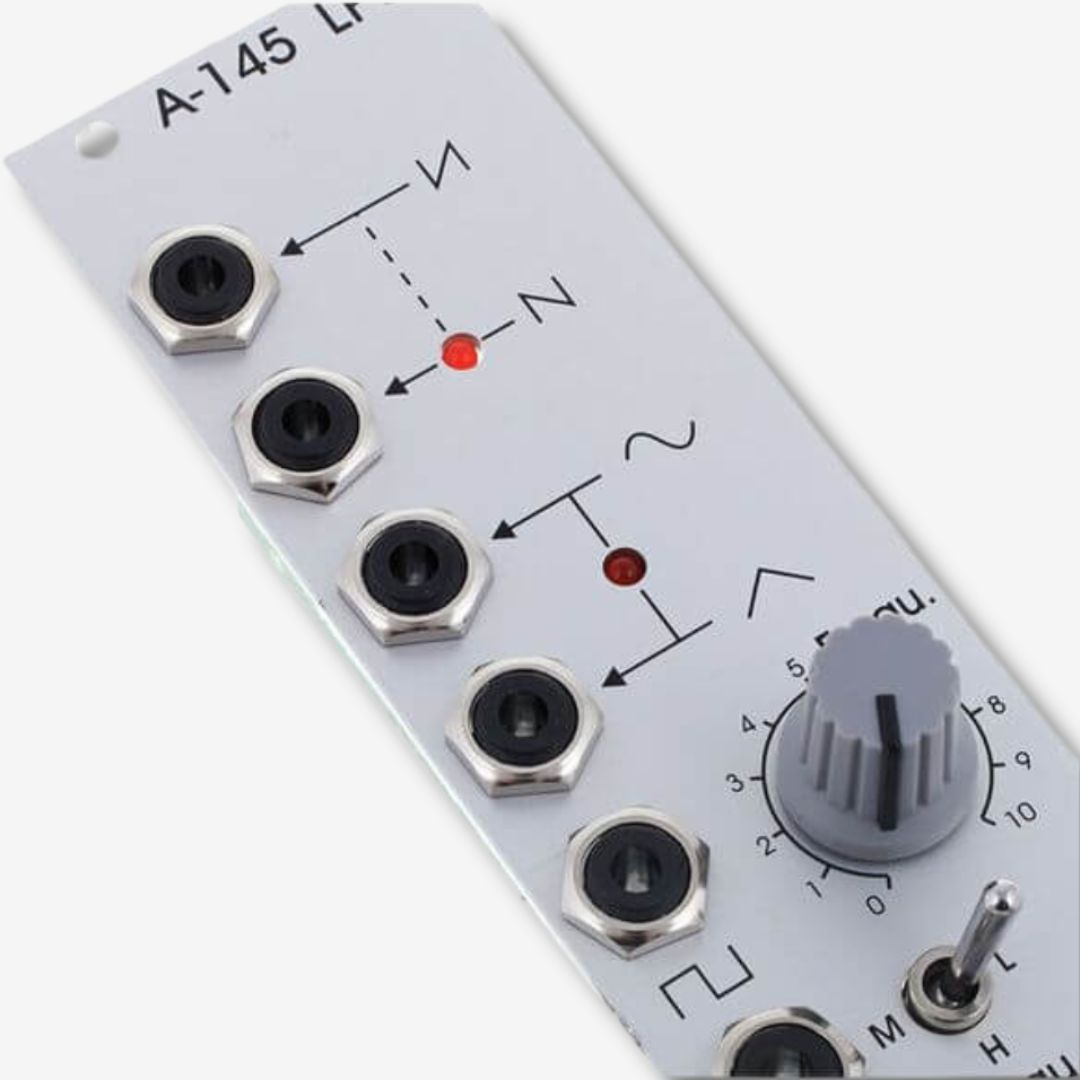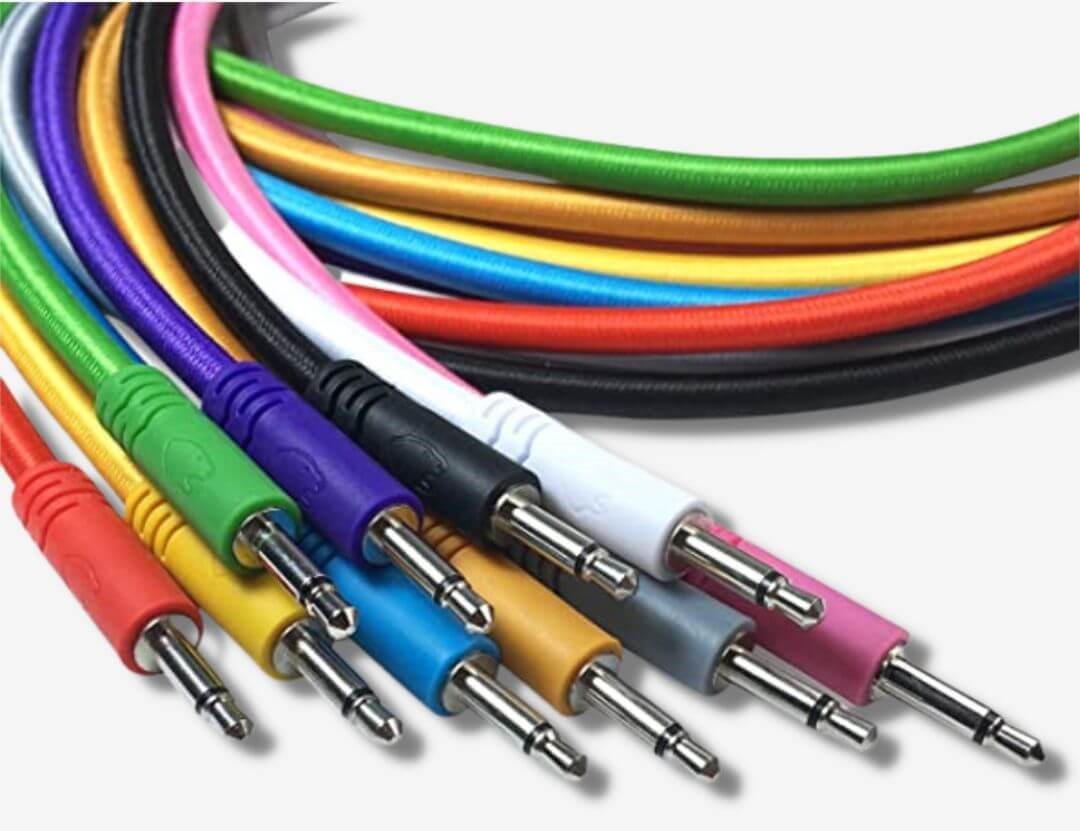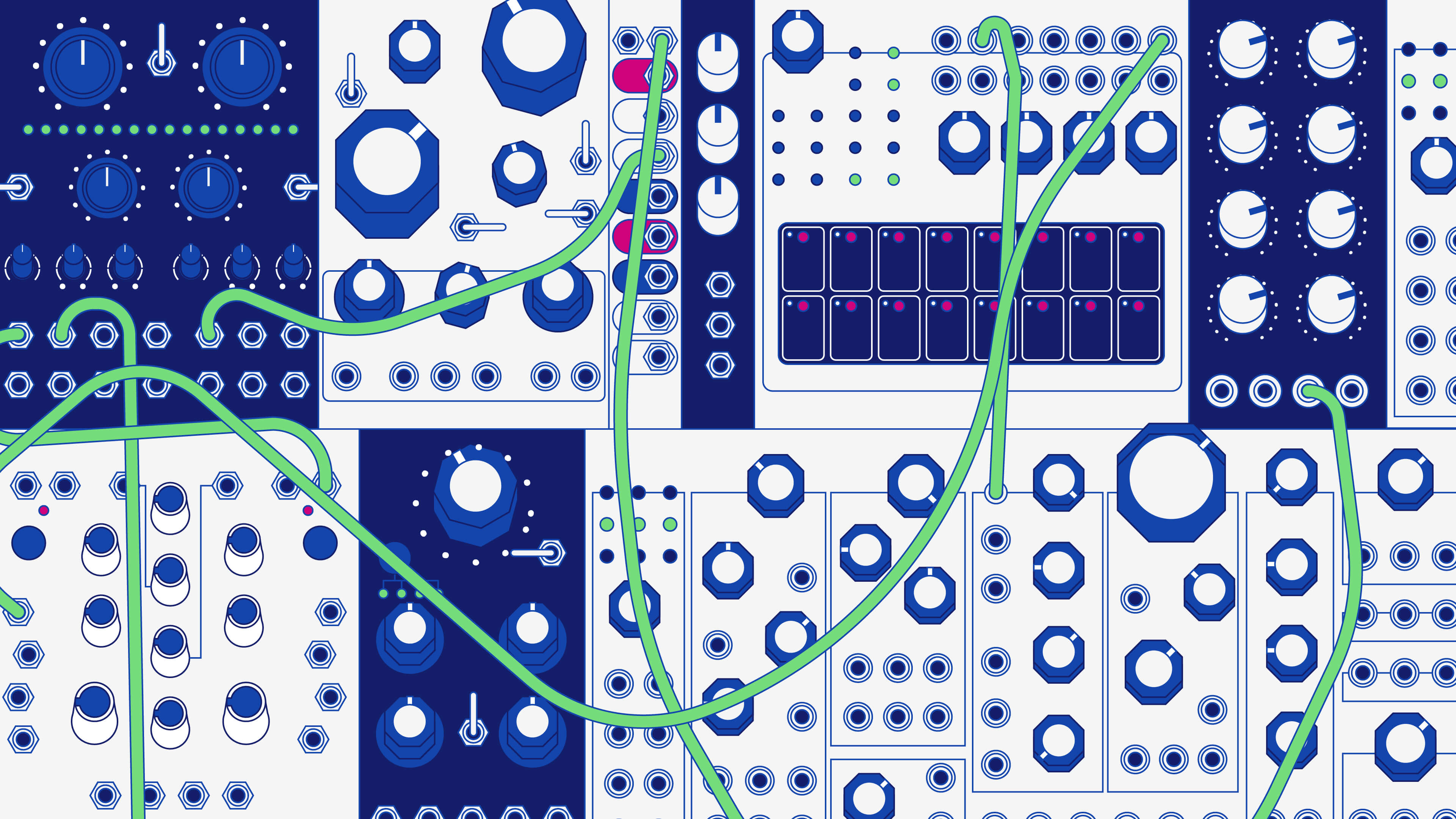A guide to modular synthesis for music producers
Modular synthesizers are electronic instruments with a personal touch. You can build them to your own specifications, determine how they behave, and in turn make some pretty unique sounds.
But building a modular synth gets expensive pretty quickly. And you need to learn the modular language of CV, Gate, and Trigger signals in order to use one how they’re made to be used.
Well, this article is going to explain how modular synths work and what makes a modular synth a modular synth.
What is a Modular Synth? The synth with a personal touch
A modular synthesizer is a collection of individual components, known as modules, and each component serves a different purpose. You’ll find these same modules in software synths like Serum, and they behave in much the same way.
The difference between modular synths and synths like Serum or the Arturia Minifreak is that these synths have fixed signal chains. Their oscillators send signals to their onboard filter, and from there the signal travels to the amplifier.
While modular synthesizers do utilizes these same modules, it’s ultimately down to you how they behave and how the signal is distributed between them.
Building a modular synth is building an instrument that unique and personal to you. You can swap modules out, expand with more, and build it as big or small as you wish.
Modules
The most common modules are ones you’d find in a software synth like Serum – LFOs, oscillators, envelopes, filters, and amplifiers. So there are modules that generate signals, modulate signals, and amplify signals.
In addition to oscillators, filters, amps, and modulators, you’ll find clocks, sequencers, effects, clocks, and many more modules that you can connect together however you like. You can have just one oscillator or five, three LFO modules or ten, and so on.

In the image above is the Doepfer A-145 oscillator module. It generates sine waves, square waves, triangle waves, and sawtooth waves as you can see by the images of the waveforms that each sit next to cable ports.
Those ports allow you to connect those waveform outputs to another module like a filter or straight to an amplifier. This is akin to assigning an LFO or an ADSR envelope to a parameter inside its oscillators.
But how do we route all of these modules together?
Cables and control voltages
Software and digital synths like Serum and the Minifreak rely on digital code to manipulate and distribute signals. However, traditional modular synths use continuous voltages to do so. And connecting each module together is made possible with patch cables.
Patch cables are 3.5mm tip/sleeve (TS) cables that distribute voltage between modules that indicates which note has been pressed.

Patch cables allow us to connect multiple modules together, and this is where the term “patch” comes from. But these patch cables don’t carry any audio – they only carry voltage between every module.
A patch is essentially a finished sound. More specifically, it’s every module, every routing, and every bit of modulation that makes the sound what it is. Therefore, the strength of the voltage these patch cables distribute determines the characteristics of the sound.
Consequently, modules will only communicate with each other if you make a physical connection between them with patch cables. This is known as patching, and the goal is to connect the inputs and outputs of modules.
Modules feature multiple input and output ports, and in practice, you need to connect the output of a module to the input of another for the connection to mean anything. Some ports are made especially for distributing voltage for audio information, others for distributing modulation voltage, others for power, and so on.
As a result, how you route these module ports with patch cables determines how your patch sounds. Voltage gives modules power, and it tells them how to behave. And that’s why this voltage is called control voltage (CV).
A CV signal is a continuous signal that you’d use to control parameters pitch or modulations like LFOs and Envelopes, for example.
Gate and trigger signals
In addition to CV, modular synths also utilize Gate and Trigger signals. Whereas CV is a continuous signal that controls pitch and other parameters, these signals are instantaneous.
Firstly, a Gate signal controls one-off events with “Go” and “Stop” messages. To explain, let’s think about MIDI.
When you press a key on your MIDI keyboard it sends data to your computer that triggers your virtual instrument or software synth and it outputs sound – then the sound stops when you release the key. Gate signals work in this same way because the voltage is at 0 when the key is not pressed but jumps to max voltage when the key is pressed.
Therefore, a gate signal manipulates the time duration of an event. Trigger signals, on the other hand, are spikes in voltage over a short duration that also occur when you press a key, but they reset after a fixed period of time rather than when you release the key.
A trigger signal always has the same duration and only triggers an event once, but it doesn’t affect the course of the event. Referred to as ‘triggering’, trigger signals only initiate and terminate a process.
These two signals allow you to trigger different modules including sequencers, restart clock modules, and more. Ultimately, these signals behave like square wave modulators as they’re sudden on-and-off messages.
Voltage controlled modules
So far we’ve referred to different modules as you’d understand them – oscillators, filters, and amplifiers.
But they go by slightly different names in modular synthesis. Because they’re controlled entirely by voltage, they’re known as:
VCO – Voltage Controlled Oscillator
VCF – Voltage Controlled Filter
VCA – Voltage Controlled Amplifier
VCE – Voltage Controlled Envelope / EG – Envelope Generator
VC LFO – Voltage Controlled LFO
Digital modules
Control voltage does control analog modules, but digital code data controls digital modules like Serum & the Minifreak. But these modules do receive and output CV signals – they just convert and re-convert to and from digital code when the signal reaches the digital module.
What is Eurorack?
With the technical bits covered, you may be wondering how different modules fit together in a rack. Imagine buying two modules that don’t fit in your rack!
Well, don’t you worry. Dieter Doepfer has you covered. In the 1990s, Doepfer created Eurorack as a regulation of sorts for modules. Its goal is to ensure modular users are confident that their modules, racks, and cases fit together no matter if they’re bought from different manufacturers.
Eurorack modules all share the exact same height of 128.5mm/5.06″ but have varying widths. However, Horizontal Pitch “HP” is how the width of modules is measured.
1HP = 5.08mm/0.2″
Final thoughts: Semi-modular synths and VCV Rack
Building a modular synth gets expensive pretty quickly. Not only do you need to learn the modular language of CV, Gate, and Trigger signals, but you also need to have a heavy wallet because modules get pricy.
But there is a free alternative. VCV Rack is a software modular synthesizer with thousands of free modules that you can download. It brings the almighty power of a modular synthesizer to your computer. You’ll find software modules modeled on almost every Eurorack module, so you can have emulations of modular racks that many spend thousands of dollars building.
But if you want to get yourself a bit of hardware then a semi-modular synth like the Moog Grandmother could be an idea.
A semi-modular synth is a full synth with some pre-ade connections between its fixed modules, but you can change those connections and make new ones.
What are the different types of synthesis?
Including modular synthesis, there are a total of 6 methods of synthesis commonly used in music production today:
- Subtractive synthesis
Subtractive synthesis is the process of removing frequencies from an original signal via filtering to sculpt a new sound. - Additive synthesis
Additive synthesis is all about stacking multiple sine waves together at different frequencies and amplitudes to build a sound. - FM synthesis
Frequency modulation is a method of synthesis whereby the frequency of one signal is modulated by the frequency of another. - Wavetable synthesis
Wavetable synthesis converts a waveform into a morphable “wavetable”, and the wavetable is made up of many “subtables” which oscillate like a regular waveform signal. Then you can modulate the wavetables in numerous ways. - Granular synthesis
Granular synthesis goes one step further than wavetable synthesis – it cuts a waveform into tiny segments of audio (granules) that you can modulate.
